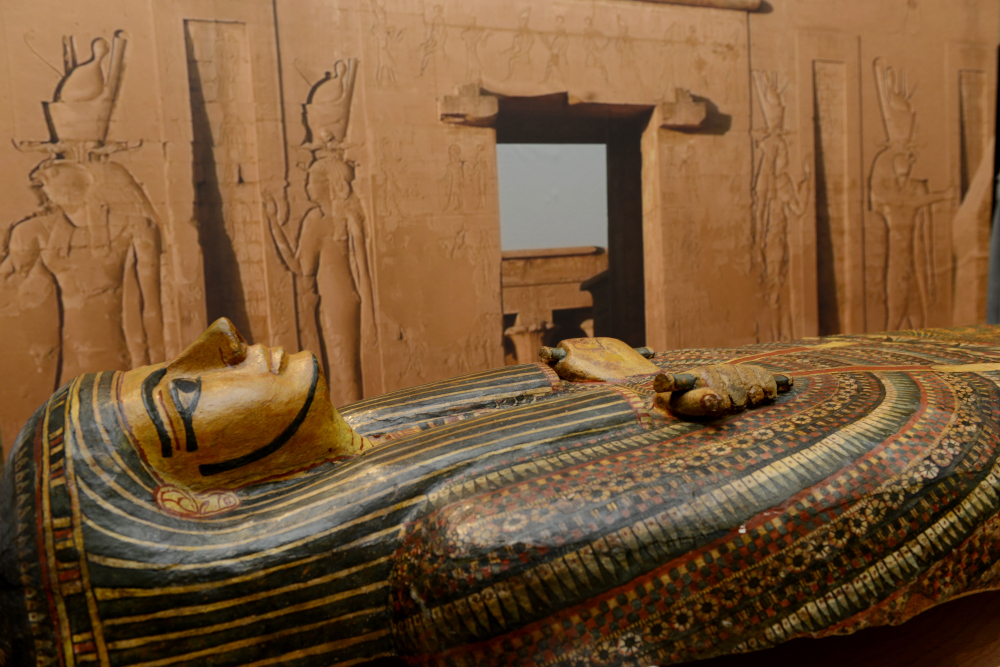Perhaps, the world’s oldest civilization, Egypt, has been around for more than 5,000 years; subsequently, our ancestors and those who came after have left us relics and monuments, commemorating their existence, leaving their mark.
Pharaonic Egypt, the ancient Egyptian civilization that spanned over 3,000 years, was followed by Persian Egypt, under the rule of the Achaemenid Empire, and then the Ptolemies followed by the Romans. In other words, Egypt has been a historic, as well as cultural, melting pot, and now, all around us from Aswan to Alexandria, Egyptian cities are awash with a tinge of historic landmarks.
In recent months, more and more groundbreaking discoveries are surfacing, with the Ministry of Antiquities, sponsoring excavations and encouraging archaeologists to uncover Egyptian history.
Here are our picks for the outstanding discoveries of the few past months alone.
The discovery of 50 mummies in a burial site found in El Minya

An Egyptian archaeology mission has uncovered a group of burial chambers dating back to Ptolemaic Egypt at Tuna El Gebel, El Minya. The team from the Research Center for Archaeological Studies in El Minya University in collaboration with the Ministry of Antiquities were able to find the tombs in a pristine state.
The excavation has been dubbed the greatest archaeological discovery of 2019 and has been circulating in international media. The tomb belonged to an elite
Archaeologists discovered ancient wine cellar in Nile Delta
A winery dating back to the Greco-Roman period was uncovered in Tel Kom Al-Trogy at Al-Bihera Governorate. 2,000 years ago, the Nile Delta was well-known for its high-quality wine production, which was highly-demanded during this period.
The archaeologists behind the discovery were sponsored by The Supreme Council of Antiquities.
Egyptian expedition uncovers a number of tombs at Koum Al-Khalajan
Just on the border of Al-Dakahlya Governorate, a number of burial sites dating back to the Second Intermediate Period of Hyksos. The tombs had jars made of lanterns with decoration from that period of time. The graves also had black pottery and a variety of differently-shaped vessels.
Six tombs from the Old Kingdom discovered in Hawa Dome Aswan
The Supreme Council of Antiquities has sponsored yet another expedition, uncovering tombs dating back to the Old Kingdom of Pharaonic Egypt near Aswan. The discovery included a funerary mask fragment, a metal amulet, and a large quantity of pottery.
Two tombs uncovered from the Roman period
An all-Egyptian archaeology mission led by the Ministry of Antiquities discovered two Roman period tombs in Mout Village at Dakhla Oasis, New Valley Governorate. A mud brick-built main hall welcomed the archaeologists, opening to two burial chambers. The team found clay lamps, as well as pottery vessels.
The site also included a painting depicting the ancient Egyptian mummification of the dead.
Roman era sarcophagi discovered in Damietta Governorate

The red, cylindrical coffins found at Tell El Deir archaeological site go back to the Roman rule of Egypt. Inside, there were layers of white linen remains that used to wrap the bodies of the deceased. The mission was also able to find different pottery, amulets, and many other artifacts.
Egyptian excavation effort unveils a tomb in Saqqara

A 4,400 year-old, well-preserved tomb of royal priests of the Fifth Dynasty was discovered in Saqqara in December of last year. The Egyptian archaeological team unearthed a one-of-a-kind burial site as the colors and features did not give in to time, and the magnificence of ancient Egyptian art can be seen firsthand.
In Dahshour, an Egyptian expedition discovered new burial sites
The excavation in the south-east of King Amenemhat II’s pyramid in Dahshour began in August, revealing a considerable number of undiscovered burial grounds. Under the sponsorship of the Supreme Council of Antiquities, the Egyptian-led archaeological effort led to several discoveries by November, including eight well-preserved sarcophagi made out of linen and wrapped in colorful cardboard that outlines the human body.
The sarcophagi were pristine, appearing in their original colors, despite their aging. The coffins were then transferred to a restoration warehouse to be prepared for permanent display in one of Egypt’s various museums.








